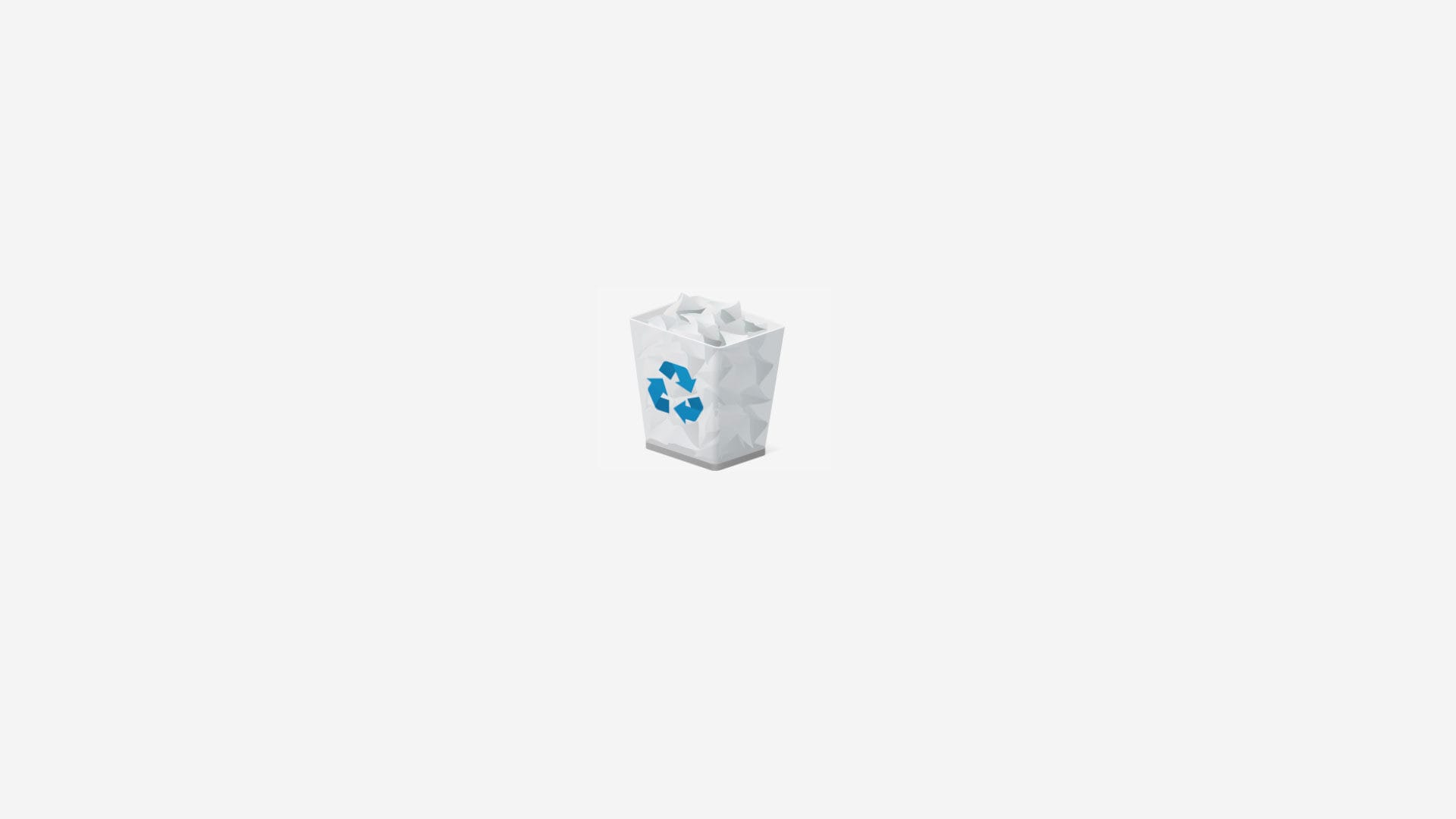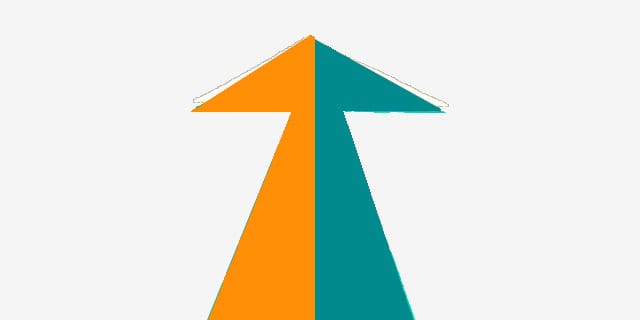The importance of writing down goals, ideas, and dreams on paper, it's therapeutic use and…
We spend an increasing amount of time behind screens, which leads to information overload and digital clutter. How can we control and manage this better?
It starts out easy enough. We only have a few emails, bookmarks, notes, open tabs, a bare social media feed, a limited amount of programs or apps, a couple of memorable passwords, and a clear digital workspace.
This seems manageable, but we add more. Before long, we descend into an overwhelming mess and develop a breadcrumb of digital chaos that becomes easier to sweep under the carpet than actually get on top of.
- We start losing passwords or are asked to add new ones we haven’t used before
- We have an overload of apps or programs we have to learn the individual settings for
- We receive solicited emails that are a mile long that we signed up to at some point for something we can’t quite remember what for now, not-to-mention the unsolicited ones that our spam filter is becoming strained in capturing effectively
- We convince ourselves we can work effectively with 78 tabs open at one time (we can’t)
- We attempt to manage the multiple social media feeds and follows that we are told we ‘must be on
- We have notes for many ideas or projects we had on our mind but which now just contribute to the overload of confusion, as they are left unfinished and scattered around in illogical order


Technology was meant to make our lives easier, quicker. Wasn’t it? We may think of minimizing our physical home or workspace, but what about our busy digital life? We didn’t account for this ever-growing digital space that increasingly consumes our limited time and energy.
With so many things that we inspire to do ‘someday’, often they get left in the pile of ‘never done’ quite simply because so much of our valuable time is taken up by clutter, and digital clutter is a major culprit.
None of us want to waste our valuable time going through and tidying up all of our digital mess, and even when we try to it seems to just return.
How Can You Declutter Your Busy Digital Life?
Here are 5 powerful suggestions you can try to implement to free up your digital headspace.
STEP 1) Work Smart, Not Hard


Remember, it’s a pursuit of vision rather than one of productivity. We need to stop thinking we will suddenly become more productive if we ‘battle through’ our clutter, like a sudden epiphany will happen when we have ‘no inbox’.
There are many articles out there about becoming more productive by having less clutter around you and organizing your busy digital life, yet what we don’t hear about is how our clutter actually affects our free time and life quality.
We don’t just want to declutter our email inbox so we can then pretend we are being more productive, only to end up just adding more towards the box again.
Therefore, the first thing we need to do is cut out this wasteful ‘more is more’ habit. It’s too easy to just say ‘clear your inbox’. We need to change our accumulating habit of chasing more first.
The idea of ticking off low-hanging fruit to feel like you have got stuff done is purely psychological, and therefore changeable. You may ‘feel’ like you have less in the way by doing more, but you only end up being less productive as you don’t focus on what tasks actually matter, and the lists just keep growing again shortly after.
Our big mistake is thinking ‘being productive’ is simply working, doing, taking action without thinking ‘why’ we are doing something. It doesn’t matter how much we do if we think this way, we will only be wasting more time, and clutter will inevitably build up again.
When we realize what is really important to us, and what will add to our quality of life, to our own created vision or goal, and not just to justify our ingrained ‘work hard’ tag, then we can move onto the second step.
STEP 2) Ruthlessly Let Things Go (Including Big Todo Lists)


How much of your digital mess is actually needed?
We like to think creating a big todo list will clear up our mind to think less about all the things we ‘have’ to do, but often it just actively gets in the way as we end up spending more time organizing our digital life rather than getting anything useful actually done.
Having a clean, decluttered space can help give your mind clarity and offer fewer distractions (although we do still need the inspiration to draw upon), but when you know something is still ‘lurking in the cupboard’ underneath then it can be just a matter of time until it rears its ugly head again.
Therefore, we shouldn’t just ‘hide’ things away but get rid entirely. There are several ways we can do this which start with one big spring-clean (which won’t need repeating if we follow through with step 3 after). Remember to keep step 1 in mind when going over these things (even though they are productivity tips the content you delete needs to align with your larger goals in life), and use linked resources to help you get it done quicker:
- Uninstall any software you might not need (and clear startup launch from Task Manager)
- Clean up your computer files and web browser (delete cookies, clear downloads, browsing history
- Set up one main password and generate other passwords through there
- Use folders to store away emails you want to keep and to store notes into actionable lists
- Organize and delete computer files and web bookmarks
- Minimize the tabs you have open at once, and programs open at one time
- Remove 7 apps in 7 days (try longer if you can until you reach a limit of essential ones)
- Clear your desk around you too
- Reduce your to-do list to only important or one-offs (not recurring – leave that for a calendar).
- Stop notifications entirely (bar a few important ones)
For a more detailed step-by-step guide in minimizing your space to maximize your life then get the ‘Less Is More Mini-Series’.
At first, it might be a little hard for people to actively delete without analysis-paralysis holding them back, so you can try to ‘fake delete’ things first by just putting them in your recycling bin, and then see if any lists, notes, apps etc. find their way back into your life in the next week. If not, then delete for good. You likely won’t miss them.
Following this spring clean you likely won’t want to repeat it again soon, which is where we then have to bring in step 3.
STEP 3) Use The 1 In 5 Rule


Let’s say you have cut through the mustard and vastly reduced your clutter. It then comes back. What to do?
This is where we need to ensure our ruthlessness continues beyond this initial sweep-up. Before letting big tasks build again, too many tabs to grow, email inboxes over-develop, or allowing new apps to contend with your digital space, we have to get a bit organized to ensure our future digital space is clean.
The Pareto Principle (1 in 5 Rule) has been used in many instances in work and life, and it can be useful for decluttering your digital life too.
Each time an area of your digital life ‘starts’ to build adopt the 1 in 5 rule. Let’s say you have 5 tabs open. Get rid of 4. Let’s say you have 30 notes taken which you haven’t looked at in ages. Either condense into one long one or just be ruthless and get rid of most of them.
If it is important you will find time to do it. If it isn’t then simply delete before a mountain is created out of a molehill.
It might seem like this is enough for some people, but this still doesn’t address our actual use with our digital habits. Enter step 4.
STEP 4) Minimize Your Screen Time, Devices & Social Media Use


Today we have so many screens that if we aren’t staring at one we are surely staring at another. It’s not a healthy life when we stare into a screen all day at work, only to commute home and stare at a smaller screen, and then get back home and stare at yet another bigger screen.
Our minds we not meant to cope with such information overload. We turn into digital vegetables that lose our creative edge. Think about when you take time to read a ‘non-digital’ book, or play (or even create) your own card game with friends. Your mind is engaged, it’s thinking, creating, and socially engaging. It’s not really doing any of that when we are stuck in autopilot and getting distracted by multiple devices vying for our attention.
Remember, it is corporations who are utilizing hooks to reel us in. We don’t have to be little fishes these sharks. Take back control and get off that screen and go exercise your mind to think for itself again. It will thank you for it.
We clearly have to use our devices to survive in this modern world, but if we can’t avoid our digital use for work, then seriously consider just how much time you are spending on a device for leisure time, and do you really need a 3rd or 4th device?
Getting off social media completely is another large step to decluttering your digital life, as without social media you will likely be accumulating less time online and be less distracted by the digital abyss, and likely to join fewer email newsletters.
This could easily be parked in step 4 but it’s such a time and energy drain that it deserves its own. When online it’s often social media that draws people in, whether for work promoting or for personal leisure.
There’s a growing number of studies that suggest the damaging effects of social media on people’s self-esteem and health. Whilst there are clear benefits behind social media too, there’s enough to suggest that it is playing havoc with your mind in more ways than you may realize.
You can join the ‘5 Day Social Media Detox Challenge’ to see how just a few days away from social media can change your outlook on real life again, and read Jarod Lanier’s ‘Ten Arguments For Deleting Your Social Media Accounts Right Now’ for some eye-opening insight that might help you change your social media habits.
STEP 5) Deal With An Ever-Growing Digital World In An Actionable Way


Only join emails that are going to actively help you, rather than just sell you something you aren’t going to use. We get so many emails trying to sell us something we don’t need. It’s only growing too. The more apps there are the more desperate companies become to get their product attention.
In one way, we become used to the adverts and sales tactics, but it doesn’t mean they haven’t taken space in our conscious thinking. We can only think sequentially one action after another. Even when we might think we are multi-tasking, our brain inputs one task after another. We may think we are capable of doing a lot of things at once, but we are essentially hard drives with a limit. We have to take breaks to eat and sleep for good reason.
The challenge we have moving forward is about how to automate and filter the flow of digital imprints we have infiltrating our minds. When we watch Netflix we might think it’s great to have so much choice, but it’s actually a nightmare for our mind to actually process.
The indecisive amongst us will end up being overwhelmed even more so in the future. Therefore, we have to become adaptable thinkers who can decide and learn faster and take action quicker.
Even if we go through steps 1 to 4 we will inevitably find ourselves falling back into the digital vortex as our lives will only become increasingly digitalized. So we have to ensure it doesn’t consume us, so that we have breaks away from it, and when we are facing the black mirror that we can deal with the overload feeding for our attention.
This is when it becomes important to be able to go full circle from time to time and remember step 1, plus to seek to build up our AQ – our ability to adapt so that we can move with the times quicker and not get either left behind or sucked into a latest trend or influence without thinking about whether we actually need to do it or not.
You can join Richly’s ‘Time To Adapt Program‘ to help you develop your AQ (what is AQ?).









